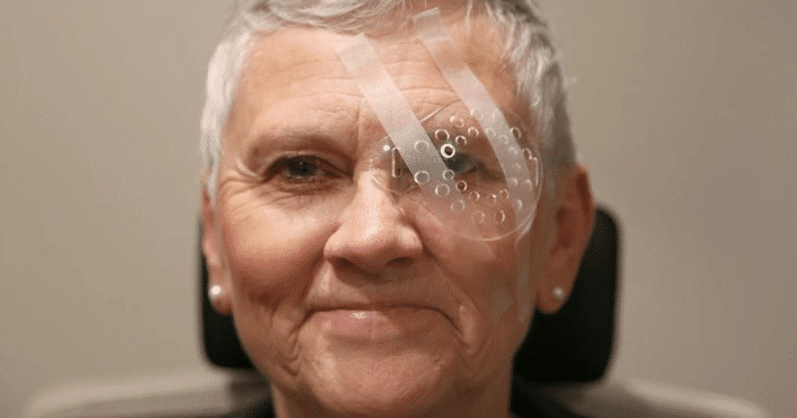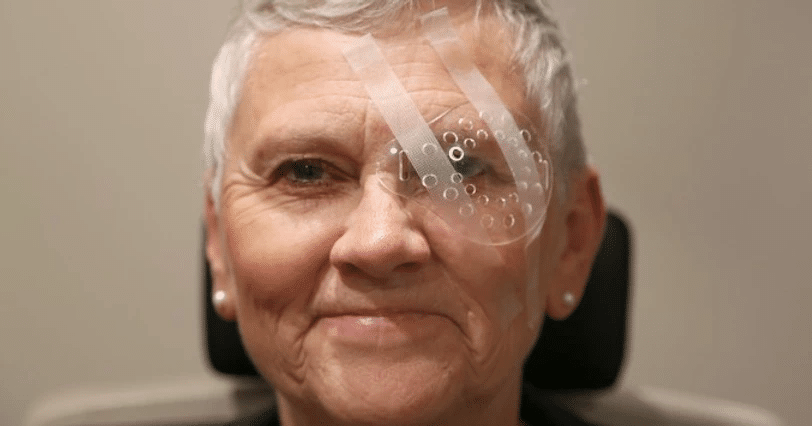What is a cataract?
When the natural lens inside the eye becomes cloudy and vision becomes blurry it’s called a cataract. Most often this is part of the normal aging process, but sometimes a cataract can develop due to trauma or injury to the eye, other eye surgery or due to the long-term use of some medications such as steroids.

What is cataract surgery?
In most cases the cataract or the cloudy natural lens is surgically removed and a synthetic Intra Ocular Lens (IOL) is implanted in its place using a procedure called Extra Capsular Cataract Extraction (ECCE).
How often is cataract surgery performed?
Cataract surgery is one of the most common and successful surgical procedures carried out worldwide with a good outcome in more than 98% of operations.
Recent studies have found that a vast majority of patients didn’t have any significant or severe postoperative complications as the advances in surgical techniques and tools have lowered the risk of severe complications.
What is the cataract operation procedure?
If you’re in good general health and you don’t have any other major eye problems cataract surgery is usually carried out as a day case procedure. The surgery itself takes about 15 minutes to perform, with about 45 minutes for Pre-Operation preparation and a further 30 minutes or so for Post-Operation recovery.
It’s better to have someone accompany you on the day of the cataract surgery and make sure to take along a pair of sunglasses to protect your eyes from bright light and glare on the way home after surgery.
Cataract surgery follow-up
You might have a clear plastic protective shield taped in place over your eye for several days or you might be asked to tape the shield over your eye at night or during naps, for protection for a few days while you recover from cataract surgery.
Most people are surprised at how good they feel and how easily they are able to resume normal activities even the day after cataract surgery. However, it’s better to observe some precautions during the first week or so, to minimise the risk of developing an infection or sustaining an injury to the eye while it heals.
The Ophthalmologist (Eye Surgeon) will typically prescribe antibiotic eye drops to prevent infection and anti-inflammatory eye drops to help reduce any internal inflammation. You’ll need to apply these eye drops several times daily for about the first week during your cataract surgery recovery.
Depending on the amount of postoperative inflammation you have, you may need to apply the drops for a few weeks to a month. Make sure to use these eye drops exactly as prescribed.

Tips for a safe and speedy recovery after cataract surgery
- Don’t drive on the first day.
- Don’t do any heavy lifting or strenuous activity for a few weeks.
- Immediately after the procedure, avoid bending over, to prevent putting extra pressure on your eye.
- If at all possible, try not to sneeze or vomit right after surgery.
- Be careful walking around after surgery, and don’t bump into doors or other objects.
- To reduce risk of infection, avoid swimming during the first week.
- Don’t expose your eye to irritants such as grime, dust and wind during the first few weeks after surgery.
- Don’t rub your eye, it’s bad idea to rub your eyes even when you aren’t recovering from eye surgery.
Generally speaking, you should be able to perform these activities within a few hours of your surgery:
- Light computer work
- Light TV watching
- Showering or bathing.
Cataract post op care
For the best possible cataract surgery recovery, follow your surgeon’s detailed instructions about how to protect your eye following your procedure. Usually these instructions will be given to you as a handout that you can take home with you on the day of surgery.
If a patient needs cataract surgery in both eyes, the surgeon will usually wait at least a month or two for the first eye to recover before performing a procedure on the second eye.
Many patients report clear vision within several hours after cataract surgery, but each person heals differently. Some patients may need as long as a week or two before they see images in their sharpest focus.
Typically, you will have a follow-up appointment with your cataract surgeon a few days after the procedure to make sure there are no complications. If you don’t notice any improvement in vision or you feel eye pain or significant discomfort in the days following this appointment, you should report this to your surgeon.
Sometimes people report some dry eye or “scratchiness” after cataract surgery. Usually these sensations should subside as your eye heals, unless you already had problems with dry eyes prior to having the procedure in which case you might need to use lubricating eye drops to relieve the “scratchiness”.
There is normally a follow up appointment with an Ophthalmologist in about 6 to 8 weeks after cataract surgery to ensure the eye has healed.
If all is well patients are advised to have a sight test with an Optometrist to check their vision and get spectacles if required, to maximise the quality of their vision.
Vision after cataract surgery
Studies show that 95% of patients who have cataract surgery will enjoy clear sharp vision often with the aid of spectacles to correct or fine tune any residual focussing error.
Following cataract surgery much more light can reach the retina and some people may find they are sensitive to bright sunlight.
To relieve the light sensitivity spectacles with photochromic lenses which darken automatically in bright sunlight can be used to correct any residual focussing error.
Photochromic Varifocal or Progressive Power lenses with an Anti-Reflection coating can often sharpen your vision for activities like night driving, reading or using a computer.

Are there any complications of cataract surgery?
When cataract surgery complications do occur, most are minor and can be successfully treated medically or with additional surgery. Less than 2% of eyes have serious sight threatening complications.
Potential cataract surgery complications include:
- Posterior capsule opacity (PCO)
- Intraocular lens dislocation
- Eye inflammation
- Light sensitivity
- Photopsia (perceived flashes of light)
- Macular oedema (swelling of the central retina)
- Ptosis (droopy eyelid)
- Ocular hypertension (elevated eye pressure).
Posterior Capsule Opacity – a common cataract surgery complication
One of the most common cataract surgery complications is a posterior capsule opacity (also called posterior capsule opacification or PCO).
Although some people call PCO a “secondary cataract,” it really is not a cataract. Once a cataract is removed, it does not come back.
During cataract surgery, your surgeon will remove the cloudy natural lens inside your eye (cataract) and replace it with an Intraocular Lens (IOL). Much of the thin clear membrane that surrounds the natural lens (called the lens capsule) is left intact during surgery and the IOL usually is implanted within it.
When the cataract is removed, your surgeon makes every attempt to maintain the integrity of the lens capsule, and normally your vision after cataract surgery should be very clear.
However, in about 20 percent of patients, the posterior portion of the capsule becomes hazy some time during cataract surgery recovery or even months later, causing PCO. Posterior capsule opacification occurs because cells of the natural lens remaining after cataract surgery have grown on the capsule.
In some cases, if the condition progresses significantly, your vision may become quite blurry.
Treating Posterior Capsule Opacity
Fortunately, a YAG laser can treat posterior capsule opacity safely, effectively and painlessly. This procedure, known as YAG laser capsulotomy, is performed in the Ophthalmology Department during an outpatient appointment.
YAG laser capsulotomy involves just a few simple steps:
- Usually the pupil of the eye is dilated with eye drops before the procedure.
- A laser removes the hazy posterior capsule from your line of sight without making an incision or “touching” the eye.
- Many ophthalmologists recommend using anti-inflammatory eye drops for a few days following the procedure.
The procedure takes only a few minutes and is entirely painless; nor does discomfort occur post-operatively.
A laser capsulotomy is a relatively simple procedure that takes only a few minutes. A laser beam is directed at the cloudy capsule behind the intraocular lens (IOL) and the energy from the laser vaporizes the tissue, restoring clear vision.
Dislocated Intraocular Lenses
Another example of cataract surgery complication is malpositioned or dislocated intraocular lenses. You may see the edge of the lens implant, or you may even develop double vision. If the intraocular lens becomes too badly dislocated, your vision maybe substantially reduced.
How can an IOL become malpositioned or dislocated?
In most cataract surgeries, the intraocular lens is placed inside the “capsular bag,” which contains the cloudy natural lens or cataract of the eye.
Ophthalmologists make every attempt to maintain the integrity of the capsular bag so that the intraocular lens can be positioned correctly within it, but the capsular bag is extremely thin and can sometimes rupture or break.
Also, the capsular bag itself may dislocate due to weakness or breakage of the fibres (zonules) that hold it in place, resulting in a condition known as zonular dialysis. This condition places you at risk of mispositioning or dislocation of the lens implant.
Even without underlying complications, intraocular lenses can still dislocate — especially if one of the springy “arms” holding the IOL in place becomes mispositioned later on.
When an intraocular lens implant is malpositioned or dislocated, your cataract surgeon can probably reposition it in a second procedure. In some cases, the lens implant must be sewn in place, or another type of lens must be implanted.
If IOL dislocation occurs following a recent cataract surgery, repositioning the lens should be done soon. This is because lens implants begin to “scar” into place approximately three months after original implantation and can become much more difficult to remove. If you do experience a malpositioned or dislocated intraocular implant, your chances of a good outcome following a second procedure are very good if it’s done promptly.
Other cataract surgery complications
Other potential cataract surgery complications range from minor eye inflammation to devastating vision loss. The risk of severe vision loss is very rare and may occur as a result of infection or bleeding inside the eye.
Some cataract surgery complications occur quite a while later. For example, a detached retina can occur months or years after a perfectly successful cataract procedure.
Most patients with retinal detachment have a good outcome if they see an ophthalmologist when symptoms first begin and treatment is done immediately. However, a small percentage will have substantially and permanently reduced vision.
Be sure to report floaters, flashes of light and a curtain-like vision loss to your Optometrist immediately, as these symptoms may indicate a retinal detachment has occurred.
Other potential cataract surgery complications are minor and may include:
- Swelling of the cornea or retina.
- Increased pressure in the eye (Ocular Hypertension).
- Droopy eyelid (Ptosis).
Minor complications usually clear up with medication and more healing time.
Does cataract surgery work for everyone?
Unfortunately for a small number of people who have other eye conditions such as Age-Related Macular Degeneration or advanced Diabetic Retinopathy might not get the same level of improvement in vision as someone without these conditions.
If you have any concerns or questions following this article, do not hesitate to contact your local optometrist who will be able to put your mind at ease.





